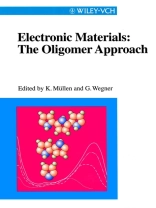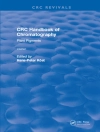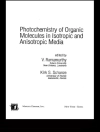Electroactive oligomers form an important class of advanced materials for the development of new devices such as thin-film, flexible batteries; semiconductors; large-area optical displays; and sensors. In addition, the study of oligomeric model compounds is an essential prerequisite for understanding and developing polymers for electronics and optoelectronics applications.
Written and edited by leading scientists in the field, this applications-oriented handbook represents the first comprehensive, systematic study of electroactive oligomeric materials. Special emphasis is placed on a critical review of the literature; relevant materials and technical data are collected in tables throughout.
Includes
– materials synthesis
– structure–property relationship as a function of chain-length
– applications in optics and electronics
– oligomers as models for polymers
– the role of oligomers in tomorrow’s technology?
Electronic Materials – The Oligomer Approach offers a stimulating combination of basic concepts and practical applications. It is sure to become a standard reference source that no-one working in the field can do without.
Inhoudsopgave
Introduction
Hydrocarbons (G. Wegner).
Oligothiophenes (K. Müllen, G. Klärner).
Tetrathiafulvalenes (P. Bäuerle).
Nitrogen-containing Oligomers (J. Becher, P. Mork, J. Lau).
Cofacial Porphyrins and Phthalocyanines (E.-W. Meijer, J.A.J.M. Vekemans, L. Gronendaal).
Oligomeric Metal Complexes (M. Hanack, M. Lang, S. Fiedler).
Packing Calculations (E.C. Constable).
Vibrational Spectra (M. Hentschke).
Electronic Excitation: Experimental (G. Zerbi).
Electronic Excitation: Quantum Chemical Interpretation (H. Bässler).
Non-linear Optical Properties (J.-L. Brédas).
Electrochemical Properties (C. Bubeck).
Optical Applications (J. Heinze).
Electrical Applications (R. Friend, M. Harrison).
The Future (F. Garnier).












